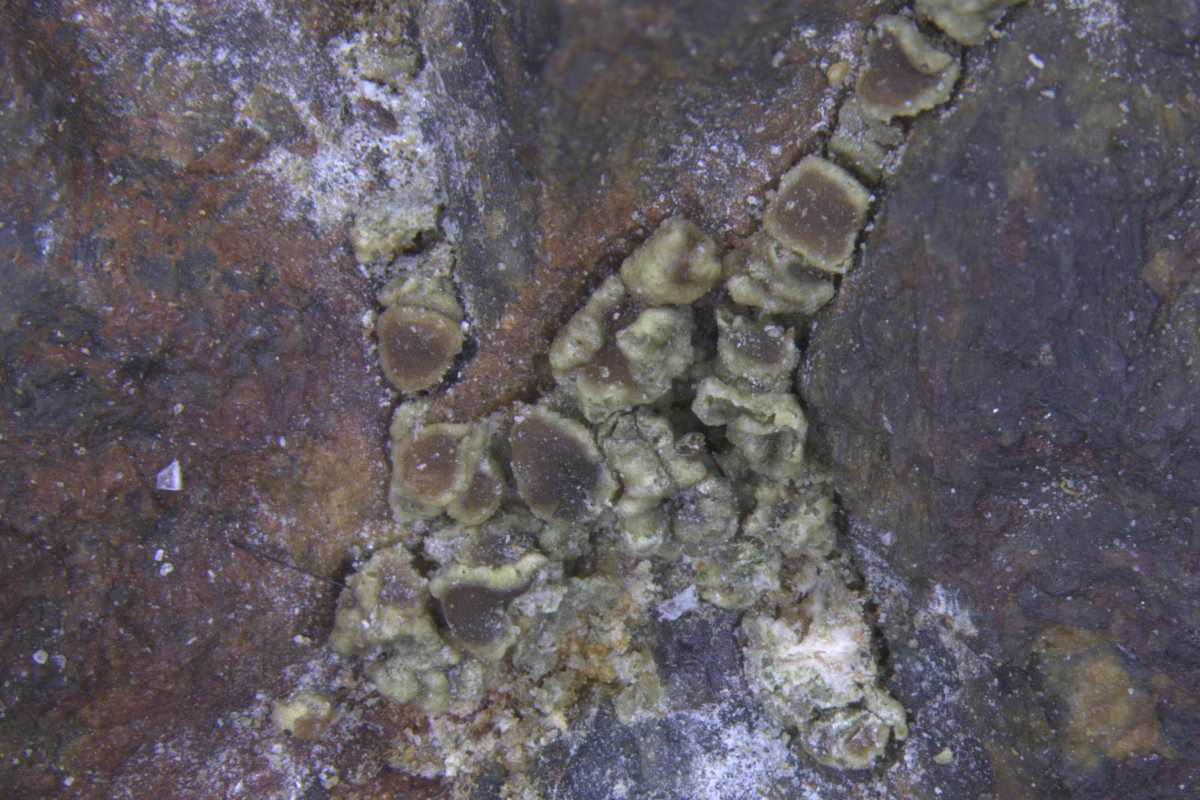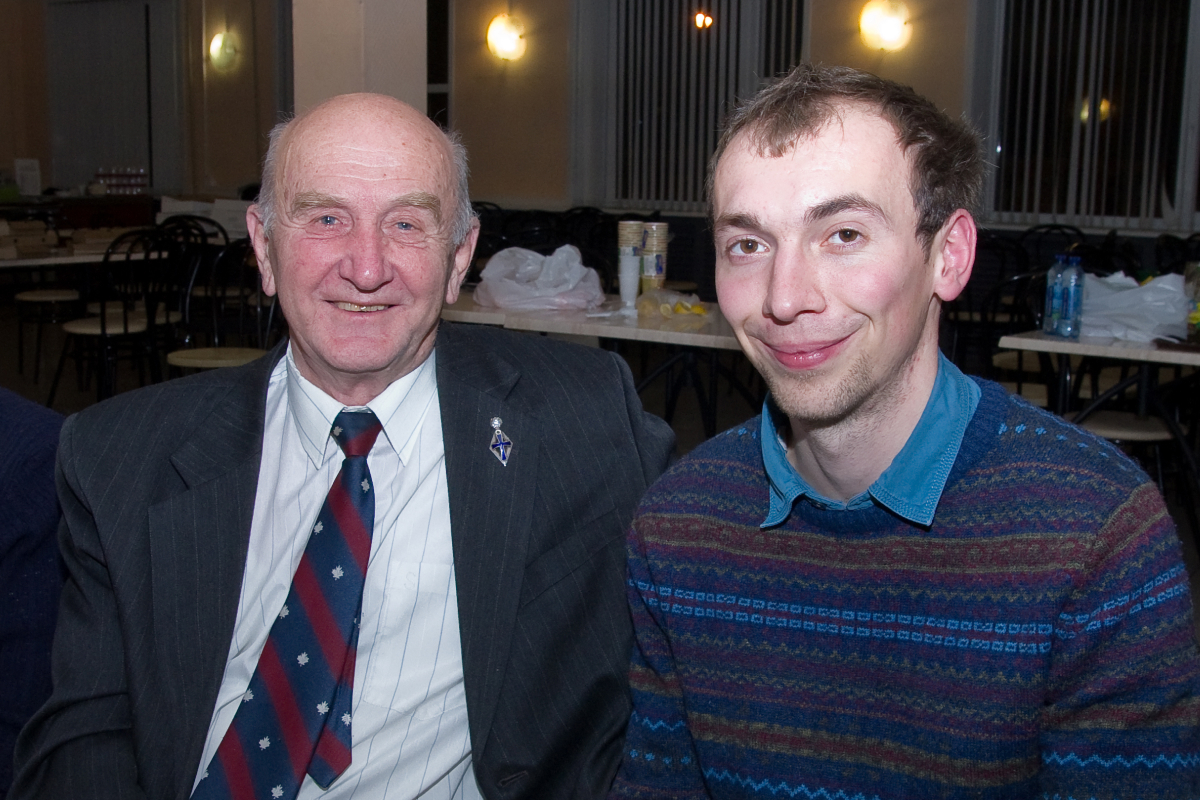St Petersburg University scientists describe unique mineral named after Honorary Professor Andrei Bulakh
A team of scientists from St Petersburg University has described the world’s first natural nickel oxalate, andreybulakhite, named in honour of Andrei Bulakh (1933-2020), Head of the Department of Mineralogy at Leningrad State University/St Petersburg University, Honorary Professor of St Petersburg University.

Andreybulachite (Ni(C2O4)∙2H2O) was discovered in 2021 by Oleg Vereshchagin, Associate Professor in the Department of Mineralogy at St Petersburg University, while preparing for piratical training on the Kola Peninsula.
The natural nickel oxalate was found in the Nyud II quarry near the town of Monchegorsk. It was officially recognised by the International Association in 2023.
"The interesting aspect of this find is its chemical composition. Very few biogenic nickel minerals are known, and this find is the first oxalate. Another intriguing detail is that while the synthetic analogue of andreybulakhite was produced in the laboratory a long time ago, it had never been found in nature," noted Oleg Vereshchagin.
The research findings are published in the European Journal of Mineralogy.
For such a nickel oxalate to form, several rare conditions must be met simultaneously: an abundance of oxalic acid (oxalates are salts of oxalic acid) and nickel in the mineral-forming system. For the acid to be abundant, it requires producers like certain fungi or lichens, which grow very slowly. Additionally, the concentration of nickel in nature, necessary to form its own rocks, is quite rare.
"In a nickel deposit, one must locate the part where nickel-rich ores come to the surface and can be colonised by lichens. Then, one must wait for the lichen to start growing on that substrate and dissolving the nickel-bearing minerals beneath it. The critical factor is that the deposit must not be exploited, or the nickel ores (along with the lichens) will be sent for smelting," stressed Oleg Vereshchagin, Associate Professor of St Petersburg University.
The study of oxalates at the University is led by Olga Frank-Kamenetskaya, Professor in the Department of Crystallography at St Petersburg University, with the participation of two teams: geologists and biologists. The biologists, primarily studying fungi and lichens, are led by Dmitry Vlasov, Professor in the Department of Botany at St Petersburg University. The geological team studying the components includes mineralogists and crystallographers. Physicists have also been actively involved in the work to describe andreybulakhite, without whom it would have been impossible to study the spectroscopic properties of the sample.
The research was conducted using the equipment of the following resource centres of the St Petersburg University Research Park: the Centre for X-ray Diffraction Studies; the Centre for Optical and Laser Materials Research; the Resource Centre for Geo-Environmental Research and Modelling (GEOMODEL); and the Resource Centre for Microscopy and Microanalysis.
As stated by Oleg Vereshchagin, the task of searching for natural oxalates was set by Olga Frank-Kamenetskaya while working on a project supported by the grant from the Russian Science Foundation (project No 19-17-00141). Andreybulakhite was found and described in the final year of the work on the grant. St Petersburg University has been among the leading recipients of grants from the Russian Science Foundation in recent years. In 2022 and 2023, St Petersburg University was the leader in the number of grants from the Russian Science Foundation: in 2022, St Petersburg University researchers received 112 grants, which is 5.5% of the total number of winning projects and the largest number of grants for one organisation. In 2023, the University maintained its leadership in this contest of the Russian Science Foundation: scholars from St Petersburg University received 70 grants, which is 5% of the total number of winning projects.
The new nickel oxalate was named in honour of Andrei Bulakh, who worked at St Petersburg University from 1962 to 2017 and devoted many years to studying the geology of the Kola Peninsula. Professor Bulakh also led the work of the Commission on New Minerals of the Russian Mineralogical Society for many years and served as Russia’s representative to the International Commission on New Minerals and Mineral Names from 1994 to 2009. Additionally, Andrei Bulakh authored textbooks for higher education in both Russian and English.

"Andrei Bulakh was one of my teachers, a man who inspired me to pursue science by his example. He was a great storyteller and devoted himself to solving a wide range of mineralogical problems. One of his scientific creeds was to periodically change the direction of research. Andrey Bulakh and Olga Frank-Kamenetskaya worked together for many years and were on friendly terms with each other. In particular, they were involved in the expertise of the stone of the famous Egyptian sphinxes at the St Petersburg (Imperial) Academy of Arts," concluded Oleg Vereshchagin.
Andrei Bulakh was the greatest connoisseur of natural stone in St Petersburg architecture. A whole series of his books under the general title "Stone in the decoration of St Petersburg" is devoted to this subject. Later, Professor Bulakh developed a special course entitled "Stone in History and Culture" for the students of St Petersburg University.
He wrote more than 200 monographs, articles and conference papers on the subject of St Petersburg stone decoration. Andrei Bulakh was engaged in the study of decorative stone deposits and their condition in architectural monuments. He worked extensively with restorers and always insisted on the use of historical materials in restoration work. He tried to ensure that the city would retain the appearance designed by the architects of our city.
St Petersburg University, the oldest university in Russia, was founded on 28 January (8 February) 1724. This is the day when Peter the Great issued a decree establishing the University and the Russian Academy of Sciences. Today, St Petersburg University is an internationally recognised centre for education, research and culture. In 2024, St Petersburg University celebrated its 300th anniversary.
The plan of events during the celebration of the anniversary of the University was approved at the meeting of the Organising Committee for the celebration of St Petersburg University’s 300th anniversary. The meeting was chaired by Dmitry Chernyshenko, Deputy Prime Minister of the Russian Federation. Among the events are: the naming of a minor planet in honour of St Petersburg University; the issuance of bank cards with a special design; and the branding of the aircraft of the Rossiya Airlines to name just a few. To mark the 300th anniversary of St Petersburg University, a postage stamp depicting the Twelve Collegia building and the monument to Count Sergey Uvarov was issued. Also, a Soyuz rocket bearing the symbols of the University was launched from the Baikonur Cosmodrome.
By the decision of the Governor of St Petersburg Alexander Beglov, 2024 was a year of the 300th anniversary of St Petersburg University in St Petersburg. On the day of the University’s 300th anniversary torches were lit on the Rostral Columns on the Spit of Vasilyevsky Island. St Petersburg University flags were raised on the Palace Bridge. The city public transport was decorated with the University’s symbols. During St Petersburg’s City Day celebrations in May 2024, St Petersburg University acted as a participating venue. Additionally, the University launched a website dedicated to the anniversary. The website contains information about outstanding University staff, students, and alumni; scientific achievements; and details of events held as part of the celebration of the 300th anniversary of the University.

